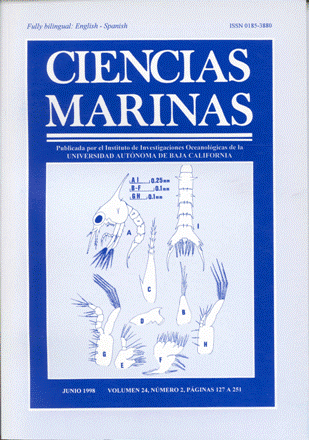Spatiotemporal distribution of birds at the guerrero negro saltworks, Baja California Sur, Mexico
Main Article Content
Abstract
The saltworks development located near the Ojo de Liebre-Guerrero Negro coastal lagoon system, in Baja California Sur (Mexico), conforms a modified habitat used by resident and migratory) birds. To describe the species composition, distribution and abundance of this avifauna, 12 monthly censuses mere performed in the area, from December 1995 to December 1996. Ninety-five species were identified. Changes in the number of species during the study period (from a maximum of 61 in January to a minimum of 39 in July) are related to the presence or absence of migratory and/or wintering species. Fifteen of the species are protected by the Mexican Government under some kind of status (two endangered, seven threatened, one rare and five under special protection). Changes in the abundance were also related to the occurrence of migratory and wintering birds, with the highest numbers recorded between August and December. The lowest abundance, 5.561 birds, was recorded in June and the highest, 72,951 birds, in August. The most abundant species were Phalaropus lobatus (24.1% of the overall record), Calidris mauri (23.2%), Podiceps nigricollis (13.8%), Limosa fedoa (6.4%) and Branta bernicla (6.2%). These results confirm that this area is ornithologically important.
Downloads
Article Details
This is an open access article distributed under a Creative Commons Attribution 4.0 License, which allows you to share and adapt the work, as long as you give appropriate credit to the original author(s) and the source, provide a link to the Creative Commons license, and indicate if changes were made. Figures, tables and other elements in the article are included in the article’s CC BY 4.0 license, unless otherwise indicated. The journal title is protected by copyrights and not subject to this license. Full license deed can be viewed here.

